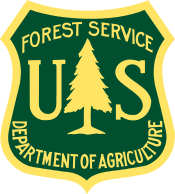Partner Feeds
4 Ways to Take a Hike and Help Your Favorite Trail
The stormy weather has arrived – and coupled with COVID-19, our trails could use some TLC. Here’s how you can help.
What does being a trail steward mean?If you are a new trail user, or just never heard of trail stewardship, it’s as simple as leaving the trail better than you found it.
A trail steward is someone that knows what a trail in good shape looks like, someone who cares for trails as they use them.
Trail stewards are especially important this year. In seasons before the pandemic, DNR would partner with stakeholders and volunteers to have large work parties of people that come and tend to the trails.
This year, COVID-19 has put a pause on those gatherings and slowed the ability to work with our partners and stay on top of regular maintenance. This means our trails may be in rougher shape than usual.
Want to help? Inspired by the Recreate Responsibly coalition and Evergreen Mountain Bike Alliance information, check out these tips on how you can help make your time on the trail a better then when you found it.
1. Trash? Pack it out.Every trail user should experience pristine nature. It starts with each of us, and it is important to do your part in keeping our trails and recreation sites free of trash.
Make sure that if you packed it in, that you pack it out.
Join the Dirty Pocket Club – put trash, even small things like gum wrappers (micro-trash), in zipped pockets or in a trash bag in your backpack to make sure it doesn’t fall out by accident.
Micro-trash affects the environment in a multitude of ways, including posing a risk to wildlife that could ingest it, and polluting the watershed.
Even organic waste, like apple cores, banana peels, and especially dog poop, are not native to Washington forests. This waste needs to be taken all the way home.
Food waste can attract bears and other animals, creating a potentially dangerous situation for animals and hikers alike.
Forests are delicately balanced ecosystems, and using them as a compost pile just isn’t helpful for the forest’s health. Besides, no one wants to see your apple core on their adventure.
Courtesy of Evergreen Mountain Bike Alliance Advanced: Leave negative traceWant to take Leave No Trace up a level? Try leaving a negative trace on your next outdoor outing. Leave the trail much better than you found it — bring a bag for trash (try reusing a bread bag or other packaging) and personal protective equipment, such as gloves and hand sanitizer.
When you see trash, no matter how small, put it in your bag and throw it into a trash bin when you get home.
Always remember to put your own safety first and be careful not to pick up anything potentially harmful, like needles. Instead, try and remember the location so you can report it later.
2. Something blocking the trail? Move it.Sometimes branches or other debris blow down onto the trail. It’s important to keep trails clear for users for whom debris might prove an obstacle, like mountain bikers and people with disabilities.
No one is immune to stumbling over a rogue log. So be courteous and help your fellow adventurers out.
If the debris is small, go ahead and move it off the path. When lifting, make sure to use your legs to lift the weight, and not your back. Never try to do more than you are able, and always consider your own safety first.
Advanced: Report larger problemsIf you came across an issue you couldn’t fix, such as a downed tree blocking the path, a large puddle, or waste you didn’t feel comfortable collecting, please report it so that DNR’s recreation staff can take care of it safely.
Visit our Recreation Resources page to see which region your trail is in, then call or email that region’s office to report the issue.
If you encounter illegal activity on the trail, please report it to the DNR by emailing forestwatch@dnr.wa.gov. Your feedback and contributions are what help make Washington trails such great places to visit.
Courtesy of Evergreen Mountain Bike Alliance 3. Large puddles in the trail?If you come across a large puddle, look to see if it has a blocked drain. This happens when leaves and sticks are washed downstream to create a natural dam. If possible, dislodge the “dam” with a stick or with your foot, allowing the puddle to drain.
Be careful of existing infrastructure and only distribute obvious debris.
Come prepared. Wear footwear that can handle a puddle, no matter the time of year, in case you come across one on the trail. Advanced: Avoid trail braidingWhen hikers go around established trails (usually because of a puddle or other obstacle) and make the trail wider, this is often called trail braiding.
Why does this matter? Trail braiding dislodges soil and can lead to sediment getting washed into our waters, degrading water quality and fish habitat.
If you are interested in learning more, this pamphlet explains why sediment is harmful to streams. And in this science demo, it shows that there is an increase in runoff when soil is exposed.
Recreationists should stay on the trails as much as possible, even if that means getting your boots or bike muddy, to keep our waterways clean and all the forest ecosystems functioning properly.
Capitol Forest Great Gravel Pack-In, 2019 4. Want to learn more about volunteering?Do you have a passion for trail maintenance and want to volunteer to help keep our forests ready for all the different kinds of recreation? There may be opportunities to work with our local recreation managers and other groups that are organizing small, local work parties to tackle areas that are in the most need.
Learn more about different kinds of volunteer events through the Washington Trail Association (WTA), Evergreen Mountain Bike Alliance, Backcountry Horsemen of Washington, Friends of Capitol Forest, Washington Off Highway Vehicle Alliance, and Northwest Motorcycle Association.
You can also volunteer with DNR in a variety of ways. Join a work party or become a Forest Watch volunteer, for instance, and spend time helping out the trails you love most. Learn how at dnr.wa.gov/volunteer.
Advanced: Become a camp hostLove to camp? Live the dream. Apply for a campground host position for the next summer season. Campground hosts provide a positive, helpful, and informative DNR presence in campgrounds and recreation areas. Learn more at dnr.wa.gov/volunteer.
Never Too Early to Plan for Late Fall-Early Winter Outdoor Burning
With fall weather here, people are thinking of when and how they will burn this year’s silviculture (forestry-related) debris.
In this article, I will focus on outdoor burning under Washington State Department of Natural Resources (DNR) rules. The rules apply to burning silvicultural material (wood, branches, bark, etc., left after thinning, pruning or harvesting forest trees) on lands that are:
- Under DNR wildfire jurisdiction (see insert below)
- Outside of a designated Urban Growth Area (UGA).
Here are some tips to ensure you are successful and safe when burning silviculuture debris this fall and winter after temperatures cool and fire dangers recede.
- Know the rules – Visit DNR’s Outdoor Burning web page to see if you need a permit to burn. Not all outdoor fires require a permit. Whether or not you need a permit, be sure to call 1-800-323 BURN or check DNR’s fire danger web page before you burn. DNR monitors local fire dangers and air quality issues through the year and may need to restrict or shut down outdoor burning in some areas, even in winter.
- Locate the pile in a good place – Piles should be 10 to 20 feet away from trees, and 50 feet from structures. Larger slash piles may need to be further away. If protecting your trees is a concern, make sure to burn on a calm day. Wind can easily push a fire’s heat sideways and scorch trees more than 20 feet away. Be aware of what is under your slash pile, too, because burning can damage soil as well as tree roots.
- Building tall piles are better – A taller pile is better because it often will burn cleaner and hotter. Just like building a campfire you want to form a pyramid of material. At that bottom of that pyramid you’ll need tinder and kindling to get the larger material above to burn. Needles and small twigs are excellent sources of tinder and kindling to get your slash pile burning efficiently.
- Start building piles in spring and summer – Building burn piles in the spring and summer allows them to dry out before fall. Dry material ignites easily and will burn cleaner and more completely.
- Cover piles before fall rains – When summer nears its end, cover between a quarter and a third of your slash pile so there will be a dry spot to ignite it. Pick the area you cover carefully; it should have enough dry, fine fuels to easily ignite. Tarps or plastic sold in large sheets make excellent slash pile covers. For a more economical solution, check with local lumber yards to see if they are giving away used lumber wraps — the materials lumber mills use to cover the loads of 2×4’s they ship to lumber yards and home improvement stores.
- Build a fuel break around your pile – Clear away all flammable debris for at least 24 inches around your slash pile to prevent the fire from spreading. If your burn is one that requires a permit, follow any special directions indicated on the permit.
- Burn with snow – If you live where it gets cold enough for snow to stick on the ground, wait until a couple of inches of snow have accumulated before igniting your pile. If you are not in snow country, burn after several good rains to insure that the ground and any nearby vegetation are moist.
- Burn in the fall – Fall or early winter are great times to burn because your material will be dryer than if you waited until spring. Fall burning also takes advantage of the approaching wet, cold winter weather that can help assure the fire stays out after the burn. Statistically, most wildfires caused by escaped outdoor burning occur in the spring, not late fall or early winter.
- Ignite your pile with a propane torch – A propane torch is a safe and efficient way to get piles ignited. Never, ever use gasoline to ignite a pile. To see what can happen if you use gasoline, visit www.youtube.com and type in “gas brush piles ignition” to see videos on the many things what can go wrong when you use gasoline to ignite slash piles. Now that you’re online, google “propane torch” for find places to buy a propane torch if you don’t already have one.
- Check your pile – Check your pile after you think it is out. Use a shovel to dig in the pile’s ashes to ensure that it is truly out. Numerous spring and summer wildfires linked to outdoor burning are started by slash piles that were burned the previous winter, some even with snow on the ground! What happens is that a pile may burn down and appear to go out but some of the material will get mixed with dirt underneath and smolder throughout winter and into spring. Then, with warmer weather, the ground dries out, the still-smoldering material finally gets exposed to air and nearby dry materials. The result? The next wildfire. No matter how sure you are that your wintertime slash pile burn is out, check the pile again — at least twice — when temperatures warm up in spring.
How do I know if my land is protected from wildfire by DNR? Look at your annual property tax statement. If it contains a charge for the Forest Fire Protection Assessment (FFPA) then your land is under DNR’s wildfire protection jurisdiction. Owners of priva te and state “forest land” pay this fee to help support DNR’s wildfire preparedness, education, training and other protection activities. FFPA rates are established in law by the legislature (RCW 76.04.610), and are assessed on the unimproved forested or partially forested parcels, excluding structures.
By Guy Gifford, landowner assistance forester & fire prevention and Firewise coordinator, Washington State Department of Natural Resources, Northeast Region, guy.gifford@dnr.wa.gov
Want answers to your questions about outdoor burning? Contact your nearest DNR Region Office, 8 a.m. to 4:30 p.m., Monday through Friday.
This article was originally published in 2017 in the Forest Stewardship Notes.
Winter tree care – 4 easy tips
Did you know that your trees need care throughout the winter to maintain their health? Or that you need to start that care now, before a big freeze hits?
Even though trees in the urban areas are now going into dormancy, they require attention throughout the winter to stay strong and be prepared for the upcoming spring.
Here are four tips to follow:
- Use mulch. Apply a two- to four-inch layer of wood chips, bark or other organic mulch spread over the root system of the tree to help reduce soil evaporation, improve water absorption and insulate against temperature extremes. To prevent rodent damage and the possibility of rot, make sure that mulch does not rest against the trunk of the tree by applying it in a doughnut shape around the tree’s base, a hands-breadth away from the trunk. In most cases, there is no need to fertilize trees. Consider layering leaves around the base of each tree as natural mulch.
- Prune. Although trees can also be pruned in the summer during active growth, late winter is often a favorite time for pruning due to the improved visibility of a tree’s limbs and structure when its leaves are gone. The main reasons to prune a tree are for safety, health and aesthetics. First, assess your tree and determine if it is developing a healthy branch structure. Remove dead, broken and crossing branches and improve a tree’s form, but make sure you are doing it correctly. Always prune at the branch collar – the point where a branch joins a larger one – and don’t remove any branches without good reason. Follow this link to find out more about pruning trees. Plus, we recommend first-time pruners sign up for a workshop, such as UW’s Center for Urban Horticulture, Plant Amnesty, Seattle Tilth and City Fruit
- Wrap the trunk. Some recently planted thin-barked trees such as honey locust, maple or linden are susceptible to bark-damaging sunscald and frost cracks when temperatures fluctuate in fall and winter. Wrap trunks of younger trees up to the first branches using commercial tree wrap to protect the bark. Remember to take the wrap off once weather warms in the spring.
- Give them a drink. If this winter brings long periods of dry weather (two to three weeks without rain or snow) and the ground is not frozen, it is a good idea to give your trees some water. Water trees throughout the dripline of the tree – the area from just outside the trunk to the outer edge of the longest branches. Trees need about 10 gallons of water per inch of tree diameter. Long, slow watering will assure that water reaches down into the root zone.
Additional Tips
If a newly planted tree has a Gator bag or other watering bag around its trunk, it is best to remove it during the winter months. During winter, these Gator bags can attract mice and other small mammals who may like to snack on the bark of your young tree. Remove watering bags until we are past frosty weather.
Always call an arborist for consultation if concerns are identified. A certified arborist is trained to use best practices that will keep trees healthy and looking good. Arborists can identify branches that have problems and ones that could be a future hazard.
A little investment into trees when they’re young can lead to beautiful trees that help cool homes in the summer, block winter winds, and add character and property value. Your care for them will provide benefits for years to come.
If you have any questions or want more information on urban tree care, contact DNR’s Urban and Community Forestry Program.
Archie Creek Fire 100 Percent Contained (Archie Creek Fire Wildfire)
Malheur National Forest Prescribed Fire Operations Update (Fall Prescribed Fire Projects 2020 Prescribed Fire)
Malheur National Forest Prescribed Fire Operations Update (Fall Prescribed Fire Projects 2020 Prescribed Fire)
Skeletons on the Hill
She presided over her lands with wide spreading arms, providing grace and shelter for many. Birds loved being near her and often perched in the folds of her luxuriant robes. She fed deer and the soil with all of the things she carefully placed around her solid feet. She deeply held the soil she loved and nourished. Life was good for a long, long time until that fateful day — the day she died.
Ponderosa Pine Skeleton. Photo by Ken BevisWas it lightning strikes perhaps? She did stand tall on the hill. Or was it simple ravage of pathogens clogging up her veins? Or did she die from starvation or no water? We don’t know, but suddenly, she wilted. Her flesh withered and became dry and brown — scabby even. Pieces fell to the earth, one at a time after dangling pathetically for long periods, waving weakly in the wind. Miraculously, she did not fall over, but came apart one slow piece at a time, bit by bit.
It took only a few short years for her lush exterior tissues to express death and fall away. All that was left was her vast skeleton and the rough gray/brown skin outside. For a while even this hung on, loose on her surface, spooky night flying bats resting underneath. Eventually, even that fell away one sheet at a time.
All that remains now is her stark white skeleton standing high on the hill, fully a century since her untimely death, haunting us with her silhouette.
Some onlookers feel a chill when they peruse the tall, standing dead tree; the SNAG…….
Skagit River tree skeleton. Photo by Ken BevisSnags remind us of death on Halloween, while our minds are filled with goblins, ghosts, ghouls and skeletons rattling about. Just like these monsters, our snags come with their own lore. Don’t lean on her. Don’t linger too long — she likes to throw big branches down to smash you. She rattles in the wind. She is a stark tree skeleton.
But wait! Isn’t that woodpecker tapping on the snag? What is it doing? It’s digging for something to eat. He finds an insect and pulls the delicious treat from the dead wood. And are those mushrooms and fungal conks coming out of the stem? Yes, dead wood is a rich substrate for fungal growth of many types, including some of those that produce a deep death-like sleep. Be careful what you eat.
Hairy woodpecker. Photo by Gregg ThompsonAnd that woodpecker just went into a dark cavity hole high on the stem, right below the red-tailed hawk perched in the top, right next to the spooky ravens croaking “Nevermore.” A squirrel just went into that other cavity lower on the stem hoping to survive the evening. Night falls and an owl gives eerie hoots as he emerges from a cavity. Bats come swarming out of cracks and holes, flying out into the night. There are many creatures living in and on the snag corpse, like an eerie mansion! Bwa HA HA!!!
Pileated woodpecker nest. Photo by Gregg ThompsonTurns out that dead wood is an essential habitat feature of forest ecosystems. And rotting wood feeds the soil, feeds the fungus, and rots away everything, including dead bodies.
While once spooked by the snag, we now know we need not fear it. Though she seems dead, she may be alive yet! Skeleton indeed, but a living one.
Protect snags whenever you can, especially big ones.
Dead trees are full of life.
Happy Halloween!
Written by Ken Bevis, DNR State Wildlife Biologist
Malheur National Forest Prescribed Fire Operations Update (Fall Prescribed Fire Projects 2020 Prescribed Fire)
Revised - Clackamas River Ranger District Fire Closure (Riverside Fire Wildfire)
Malheur National Forest Prescribed Fire Operations Update (Fall Prescribed Fire Projects 2020 Prescribed Fire)
DNR is protecting our communities by reducing our energy footprint
Did you know that a smaller energy footprint contributes to a healthier environment? Using less power reduces the amount of harmful greenhouse gas emissions, which are the leading cause of global warming. On an individual level, we can make conscious choices every day to cut down our energy consumption. As an agency charged with prudent management of our state’s environment, the Washington Department of Natural Resources (DNR) is always looking for ways to reduce our energy footprint.
The steps that DNR takes begin with the State Efficiency and Environmental Performance Office (SEEP). This division in the Washington Department of Commerce works with state agencies like DNR to help us reduce greenhouse gas emissions in effective and affordable ways. SEEP assists agencies in finding more sustainable and environmentally beneficial options, like electric vehicles and energy-efficient or zero-energy facilities. They also work to actively reduce the amount of single-use plastics used in state government operations.
With the help of SEEP, DNR recently implemented a series of Energy Support Contracting (ESCO) projects to replace or fix inadequate heating, ventilation, and air conditioning systems across the state.
The first of the series was a year-long project at the Tukes Work Center, where capital and one-time operating funding was used to replace the HVAC system that greatly improved the center’s energy consumption.
Another project installed a new HVAC system at the Northwest Region Headquarters, using ESCO to improve the performance of the systems and optimize energy use. Steve Dormaier, DNR Northwest Region Assistant Manager for Business & Operations, spoke about the project’s success:
“The work they performed made a huge difference with making the system operate correctly and has substantially helped with employee satisfaction and reducing HVAC complaints,” Dormaier said. “It was necessary work.”
DNR has taken many steps over the years to reduce energy consumption and continue to look for ways to reduce our energy footprint.
The hangar where we maintain our wildfire helicopters was upgraded to be a more efficient building. The lights were replaced with high-efficiency, low-wattage lamps and ballasts, and the heating system was replenished.
Another plan, called the DNR Windows Server Virtualization Project, was completed to consolidate the number of computer servers needed in the Natural Resources Building Data Center. This project not only greatly lowered power consumption, but also brought in $107,359 from Puget Sound Energy.
DNR is always looking for ways to save money, especially if it can help reduce our energy footprint. As an agency, we value our environment and we are conscious of our energy consumption. As an individual, you can make small or big changes in your life to minimize your carbon footprint for a better future




